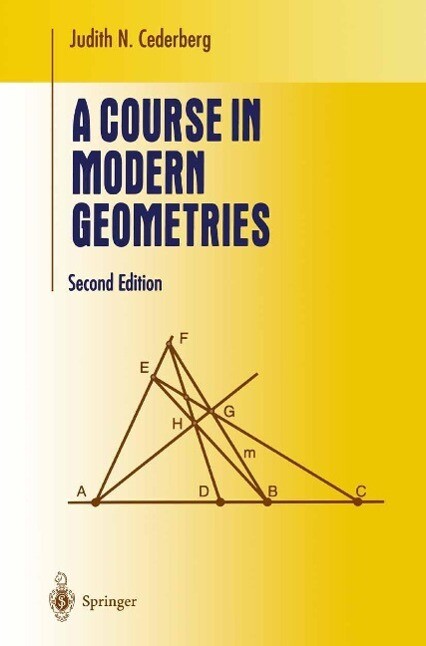A Course in Modern Geometries is designed for a junior-senior level course for mathematics majors, including those who plan to teach in secondary school. Chapter 1 presents several finite geometries in an axiomatic framework. Chapter 2 continues the synthetic approach as it introduces Euclid' s geometry and ideas of non-Euclidean geometry. In Chapter 3, a new introduction to symmetry and hands-on explorations of isometries precedes the extensive analytic treatment of isometries, similarities and affinities. A new concluding section explores isometries of space. Chapter 4 presents plane projective geometry both synthetically and analytically. The extensive use of matrix representations of groups of transformations in Chapters 3-4 reinforces ideas from linear algebra and serves as excellent preparation for a course in abstract algebra. The new Chapter 5 uses a descriptive and exploratory approach to introduce chaos theory and fractal geometry, stressing the self-similarity of fractals and their generation by transformations from Chapter 3. Each chapter includes a list of suggested resources for applications or related topics in areas such as art and history. The second edition also includes pointers to the web location of author-developed guides for dynamic software explorations of the Poincaré model, isometries, projectivities, conics and fractals. Parallel versions of these explorations are available for " Cabri Geometry" and " Geometer' s Sketchpad" .
Judith N. Cederberg is an associate professor of mathematics at St. Olaf College in Minnesota.
Inhaltsverzeichnis
1 Axiomatic Systems and Finite Geometries. - 2 Non-Euclidean Geometry. - 3 Geometric Transformations of the Euclidean Plane. - 4 Projective Geometry. - 5 Chaos to Symmetry: An Introduction to Fractal Geometry. - Appendices. - B Hilbert s Axioms for Plane Geometry. - C Birkhoff s Postulates for Euclidean Plane Geometry. - D The SMSG Postulates for Euclidean Geometry. - E Some SMSG Definitions for Euclidean Geometry. - F The ASA Theorem. - References.
